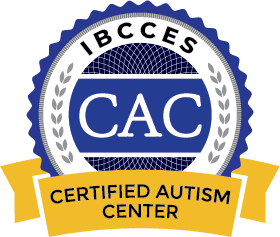

JazzReach proudly presents Get Hip!
Teachers, musicians, jazz Cats and newcomers alike, check out the latest and greatest videos and learning tools for your enjoyment!
As a producing partner, the Dennos Museum Center is excited to share the first episodes in a new series from New York-based JazzReach. Get Hip! Everything You Never Knew You Wanted To Know About Jazz Music is a twelve-episode educational docuseries on the subject of jazz music that aims to cultivate a greater appreciation, awareness and understanding of some of the many facets of the art form that make it such a rich, vital, compelling and uniquely American musical tradition.
The following episode links are available free of charge for personal and educational use by jazz lovers and educators throughout northwest lower Michigan. Support was provided by the Osterlin Performance Endowment during the 2020–2021 Dennos Concert Season.
In addition, JazzReach has provided teacher resources with lesson plans for each program. The plans are freely available via the LESSON PLAN PDF links below. An overview of the lessons is available here.
NOTE: Each video link is password protected. Enter GetHip!2022 to view the episode.
Episodes & Lesson Plans
 How Jazz Works: What Happens When a Jazz Band Plays?
How Jazz Works: What Happens When a Jazz Band Plays?
For many, hearing jazz for the first time can seem like watching a foreign film without subtitles or being served a plate of food that doesn’t look, smell or taste familiar. However, in many instances, all we need is some foundational information and guidance before things begin making sense and becoming more relatable, appreciated, understood and (hopefully) enjoyed.
In this episode, some of today’s top jazz artists will help break down and clarify what’s happening when a jazz band plays and explore the function and role each individual member and how they work together to make a cohesive, creative and collectively felt musical statement.
Some of the topics covered include:
- The individual role and function of the bass, the piano and the drums
- The collective function of all three as members of the rhythm section
- Who plays the melody?
- Who plays harmony ?
- Who plays the rhythm?
- What is song form?
- What does it mean to solo?
- What does it mean to improvise ?
- What makes [playing] jazz different from other styles of music?
 Jazz Now: Profiles in Modern Jazz
Jazz Now: Profiles in Modern Jazz
This episode will introduce viewers to some of today’s most dynamic, visionary jazz artists and in their own words, inform us about their personal journeys, how they got started, how they were introduced to jazz, what inspired them to want to play professionally, who their teachers, role models and mentors have been, how they’ve negotiated various challenges and obstacles along the way, and what they particularly love about life as a professional musician.
Each artist profiled has origins in different parts of the country and the world and were each introduced to music, the joy of music-making and the sound of jazz at different stages in their development by a variety of caring individuals in their lives who nurtured their curiosity, offered access and exposure and encouraged engagement and participation.
 An Abbreviated History of Tenor Saxophone
An Abbreviated History of Tenor Saxophone
This episode will introduce viewers to some of the most extraordinary tenor saxophonists in the history of jazz. Why Tenor Saxophone? Well, when most people think of jazz, the first instrument that may come to mind, if not the trumpet, is the saxophone. This is due in part to the fact that the instrument has been a mainstay in jazz ensembles through much of the genre’s history and at the forefront of all of its major stylistic evolutions and subsequently, helped shape and define the very sound of the music.
Featured in this episode are four of today’s most extraordinary tenor players offering illuminating commentary and insights on the evolution of the instrument throughout jazz history. They include, Wayne Escoffery, Alexa Tarantino, Lucas Pino and Camille Thurman.
From Ben Webster and Coleman Hawkins to Dexter Gordon, Johnny Griffin, John Coltrane, Wayne Shorter, Michael Brecker, Branford Marsalis and many more, this episode aims to elevate awareness of some of the many groundbreaking artists throughout jazz history who’ve made tremendous artistic achievements and lasting impacts on the creative possibilities of the instrument.
 Abbreviated History of Jazz Trumpet
Abbreviated History of Jazz Trumpet
This episode will introduce viewers to some of the most extraordinary trumpeters in the history of jazz. Why Trumpet? Well, when most people think of jazz, the first instrument that may come to mind, if not the saxophone, is the trumpet. This is due in part to the fact that the instrument has been a mainstay in jazz ensembles through much of the genre’s history and at the forefront of all of its major stylistic evolutions and subsequently, helped shape and define the very sound of the music.
Featured in this episode are four of today’s most extraordinary tenor players offering illuminating commentary and insights on the evolution of the instrument throughout jazz history. They include, Keyon Harrold, Michael Rodriguez, Freddie Hendrix and Jeremy Pelt.
From Louis Armstrong and Dizzy Gillespie to Kenny Dorham, Clifford, Brown, Miles Davis, Lee Morgan, Freddie Hubbard, Don Cherry, Wynton Marsalis and many more, this episode aims to elevate awareness of some of the many groundbreaking artists throughout jazz history who’ve made tremendous artistic achievements and lasting impacts on the creative possibilities of the instrument.
 An Abbreviated History of Jazz Piano
An Abbreviated History of Jazz Piano
This episode will introduce viewers to some of the most extraordinary pianists in the history of jazz. Why Pianists? Well, the pianists have always played a critical role in the sound, feeling and advancement of jazz because of the highly unique nature of the instrument.
By definition, the piano is a percussion instrument in so far as one gets a sound out of the instrument by striking the keys with their fingers which enables pianists to play a rhythmic function like the drummer or bassist. And with the exception of guitarists, pianists are typically the only members of a jazz band that can play two or more notes at the same time meaning they can also play chords and serve a critically important harmonic function. They can also play single-note sequences (like horn players) and can therefore serve an important melodic function as well.
From the art form’s earliest beginnings through all of its major evolutions and stylistic developments, the pianists have helped shape and define the very sound and feeling of jazz. As you will learn, they have been and continue to be among some of the most creative, groundbreaking visionaries in all of jazz history.
Featured in this episode are five of today’s most extraordinary pianists offering commentary and insights on the evolution of the instrument throughout jazz history. They include, Helen Sung, Manuel Valera, Miki Yamanaka, Luis Perdomo and Lawrence Fields.
From Duke Ellington and Jellyroll Morton to Art Tatum, Bud Powell, Thelonious Monk, Mary Lou Williams, Horace Silver, Herbie Hancock, Keith Jarrett and many more, this episode aims to elevate awareness of some of the many groundbreaking artists throughout jazz history who’ve made tremendous artistic achievements and lasting impacts on the creative possibilities of the instrument.
 An Abbreviated History of Jazz Drumming
An Abbreviated History of Jazz Drumming
This episode will introduce viewers to some of the most extraordinary drummers in the history of jazz. Why Drummers? Well, the drums have always been the heartbeat of all styles of music that have their roots in Africa – which explains why thea drums have been at the core of all Black American Music.
The drums are what gives music its pulse and makes us want to move, dance, tap our feet, snap our fingers and bob our heads. From the art form’s earliest beginnings through all of its major evolutions and stylistic incarnations, the drums have helped shape and define the very sound and feeling of jazz. As you will learn, the drummers have been and continue to be among some of the most creative, groundbreaking visionaries in all of jazz history.
Featured in this episode are four of today’s most extraordinary drummers offering commentary and insights on the evolution of the instrument throughout jazz history. They include, Carl Allen, Jonathan Barber, Jeremy Dutton and Marcus Gilmore. From “Papa Jo Jones and Sonny Greer to Max Roach, Art Blakey, Roy Haynes, Elvin Jones, Tony Williams, Jack DeJohnette and many more, this episode aims to elevate awareness of some of the many groundbreaking artists throughout jazz history who’ve made tremendous artistic achievements and lasting impacts on the creative possibilities of the instrument.


